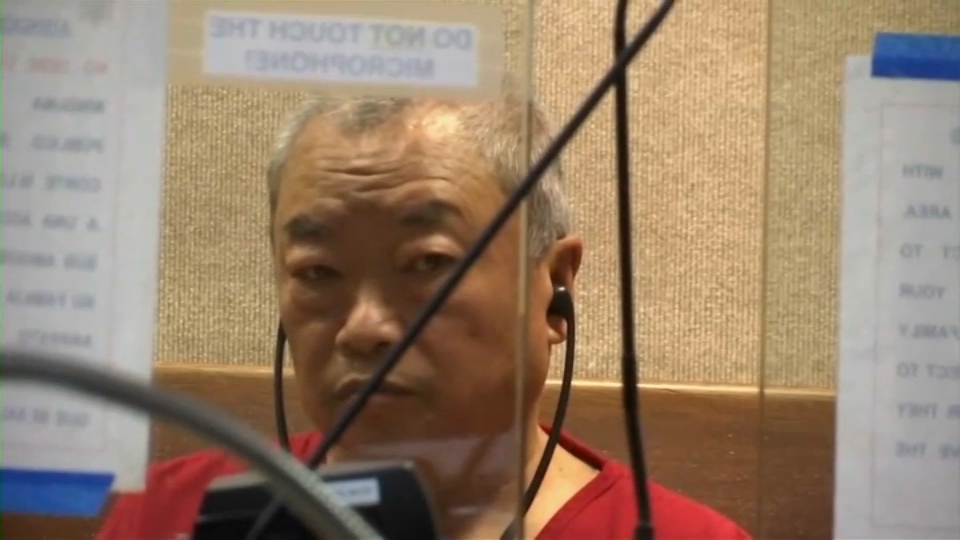The street names sound innocent enough: “Molly,” ” Lightning Bolts,” “Spice,” “K2” and “Funky Monkey.”
They are a relatively new class of party drug: synthetically produced chemicals altered to mimic existing drugs like ecstasy, cocaine, heroin, and marijuana.
Federal agents say that just the slang drug term “Molly” covers two dozen different chemical compounds.
While their chemical makeup sometimes keeps these drugs off the Federal List of Schedule Drugs, technically making them legal (for now), drug agents say the synthetically produced drugs pose as much, if not more danger than the natural and illegal form of drugs for those who use them.
“There are a whole host of side effects that have been associated with these synthetic drugs,” said Bruce Goldberg, assistant special agent in charge of the San Francisco field office of the US Drug Enforcement Administration.
Local
Five new different synthetic drug compounds are introduced to the US market every month, according to the DEA. In 2009 alone, DEA agents found more than 200 different synthetic drug compounds on the streets.
They’re also easy to find. A quick search on the Internet can land any number of people willing to provide these drugs at a moment’s notice.
“The drugs are widely available,” one recovering drug addict told NBC Bay Area’s Investigative Unit. “The scary thing is Oxycontin and synthetic drugs were really coming up when I was going into high school.”
Because she’s still in recovery, the addict asked to remain anonymous but agreed to be called “Rebecca,” a fictional name. A self-described “All American” girl, who succeeded in academics and sports, Rebecca said she first experimented with drugs when she was 14 in middle school. Rebecca began using drugs seriously the next year.
She said that throughout high school and college she tried all kinds of drugs. Rebecca became addicted to cocaine and alcohol and says she tried synthetic drugs like lightning bolts and “Molly.”
“Molly is a hell of a drug,” Rebecca told the Unit’s Stephen Stock. “I’ve used it and you don’t know what’s in it. There is a lot of meth in it. There are hallucinogens in it. That’s a scary drug.”
Rebecca tells The Investigative Unit, the drug has become a regular party tool, for a typical night out.
“Usually everyone will have their drug with them. If you’re using, you will bring it to a party,” Rebecca said. “I wasn’t going to a party without my stuff.”
That’s why the DEA in Washington, DC, estimates that synthetic drugs have become a multi-billion dollar industry here in the United States.
“What we think now, is that most of the chemical portion of these drugs is coming in from China,” said DEA assistant Special Agent in Charge Goldberg. ““The challenge for us is immense. They (the drugs) are here. We’re seeing out in the valley, we’re seeing them here in the Bay Area, we’re seeing them in the South Bay."
Goldberg says one of the biggest problems with enforcement is time. Manufacturers constantly change the drugs’ chemical composition, making them legal under laws that haven’t caught up to the technology.
That puts extra pressure on US Customs and Border Protection at San Francisco’s International Airport who must try to stop bags of powder they intercept on a daily basis.
“Yeah, [we see synthetic drugs] on a regular basis,” said US Customs and Border Protection’s Chief Ed Low. “We see it daily.”
Chief Low heads a US Border Patrol Team that inspects the one million international pieces of mail that pass through San Francisco International Airport every month.
The numbers his team provided us with show the size of the problem. In 2011 Customs and Border Protection made 183 synthetic drug seizures with a total weight of 920.30 pounds. In 2012 that jumped to 218 synthetic drug seizures..
The border team has a hard time keeping up with the chemical changes to drugs coming through the border.
“If something does not test positive or if US Customs and Border Protection cannot articulate why a thing may not enter the United States I don’t know that we have the legal authority to continue to hold it,” said Chief Low.
While many synthetic drugs aren’t yet illegal, they aren’t necessarily safe. Experts say the often aren’t clear because the drugs don’t go through rigorous scientific testing on animals or humans.
“Kids are playing Russian roulette with their lives by ingesting things they are not aware of how dangerous they are,” said the DEA’s Bruce Goldberg.
Just ask Marin County activists Mark Dale. Dale's son became a drug addict as a teenager.
That prompted Dale to form Families 4 Safer Schools, a local volunteer group devoted to educating parents and teens about the dangers of all types of drugs.
"There's a thousand different forms of 'Molly,'" said Dale. "You don't know what's in your 'Molly.' You don't know what it is being cut with. You don't know what it really is. And in fact, back in New York they just had two deaths" after young people took synthetic drugs.
According to California's Poison Control, ER visits by people who’ve used synthetic drugs have increased in recent years. In 2011, there were 424 visits to hospital emergency rooms due to synthetic drug related problems. In 2012 that number went up 10%.
The vast majority of the these visits (735) were by people between the ages of 13 and 29.
“I look at kids that are 14 and 15 and I think ‘Oh my God, I can’t believe I was doing drugs at that age,’” said Rebecca.
Rebecca believes she barely escaped her addictions with her life. She wants to warn other young people not to take the risks that she did, because they might not be so lucky.
“Kids now, they are going to try those synthetic drugs and not wake up,” Rebecca told NBC Bay Area. “And what an ultimate price to pay for experimenting with just maybe just coming of age, I’m not the judge of that. It’s much higher consequence and much higher risk and that is what is really scary.”
Congress has passed new laws that allows the DEA to temporarily put certain synthetically altered compounds on the scheduled drug lists for up to two years.
But fighting this constantly changing drug scene can still be a challenge. The DEA’s Goldberg says it can take years to get a new chemical drug permanently added to the federal list of controlled substances, making them illegal.
But it takes a chemist in Asia only a couple of week to change a molecule and get new synthetic drugs on our streets, starting the entire cycle, all over again.



